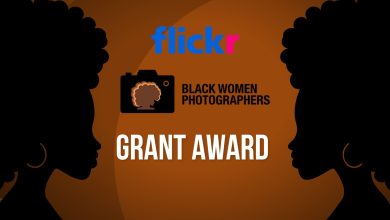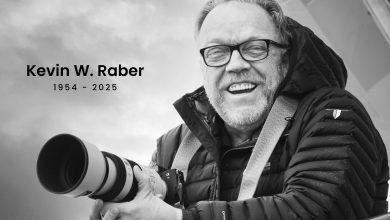TWiP #176 – How to Buy Lenses
On this episode of TWiP… Should you buy on or off brand lenses? When to shoot RAW vs. JPEG, and DSLR market leaders Nikon and Canon widen their leads.
Hosts: Frederick Van Johnson, Ron Brinkmann, Bruce Clarke
NEWS & DISCUSSION
Leica to Sell Lens Adaptors to Mount Pentax, Hasselblad and Mamiya Glass on S2 Camera
Leica will be releasing an adapter which will allow other owners of the S2 to attach lenses from other manufacturers. Frederick, Ron, and Bruce discuss whether they think we'll ever see other camera manufacturers such as Canon and Nikon doing this. Bruce doesn't see this happening with the big players like Canon or Nikon but thinks it may be a way that some of the smaller manufacturers could try to gain some market share by opening up their bodies to work interchangeably with other brands of lenses. Ron was hoping to see more of this with the increased popularity of the micro 4/3rd cameras. Frederick opens up the discussion to the validity of using 3rd party lenses from companies like Sigma and Tamron and wonders how many listeners are using off-brand lenses and what they think of them.
Head on over to the forums and share your thoughts on using 3rd party lenses.
When JPEG Trumps RAW
A recent post on Your Photo Tips, reopened the long running debate of RAW vs. JPEG. Although RAW files offer the most latitude and highest image quality, there are situations where shooting JPEG may be an advantage. As a wedding photographer, Bruce shoots on RAW 95% of the time. The only instance where he might shoot in JPEG would be when doing things like a photo booth at a wedding or when he's covering a sporting event where he might be capturing 1000's of frames under controlled lighting and doesn't have to be as concerned with needing that additional wiggle room. Ron also shoots mostly in RAW but will occasionally switch to JPEG if he needs to do a quick capture such as when he was recently in Venezuela and was photographing his guide diving into a tiny pool of water. He used JPEG to get the maximum number of frames possible so he wouldn't miss the shot.
Nikon and Canon Widen Their Lead in Digital Cameras
No surprise, Canon and Nikon continue to grow their market share which is no surprise. What is the surprise here is the number of units they are shipping. Frederick wonders if the gap has widened so far if it's too late for the other guys. Ron thinks that Sony is the dark horse here and could make some waves with their EVO view finders cameras. Bruce thinks that it's important that there is competition in the space to keep pushing the leaders. Speaking of Nikon, Bruce was recently at a workshop with Joe McNally and shared his experiences seeing him work.
Related to gear, Ron recently picked up the new MacBook Air and is using a beta update of Dropbox to manage storage. The new Beta is available at the Dropbox forums and allows you to be more specific about what folders you sync. Dropbox is a great solution for sharing and synchronizing files between computers.
LISTENER QUESTIONS
Every week our producers scour the TWiP forums to find the best questions for us to answer on the show. Here are this week's questions:
Question #1: Bookself from North West Florida: I'm considering a baby DSLR for travel. There are two Fuji camera with very similar features and price: Fujifilm FinePix HS10 and the Fujifilm Finepix S200EXR. Could someone tell me what the difference is? (aside from $20). About the only feature that would make much of a difference to me would be low light capability.
Bruce: Of the two, I think the S200EXR would be the better choice for low light situations. Here are the specs for the two cameras:
HS10 – http://www.fujifilm.com/products/digital_cameras/s/finepix_hs10/specifications/index.html
S200EXR – http://www.fujifilm.com/products/digital_cameras/s/finepix_s200exr/specifications/index.html
The HS10 has a 30x optical zoom, 10.3 mp, and a 1/2.3 inch CMOS sensor. According to DPReview.com, it doesn't perform well in low light. http://www.dpreview.com/reviews/q110superzoomgroup/page5.asp
The S200EXR has an interesting CCD sensor that appears to have 3 modes depending on the shooting situation. As described on their website, this Super CCD EXR sensor features a ‘new arrangement of the color filter mosaic provides more image data than conventional arrays. Combined with new 3-way Capture Technology, the result is a single sensor that can operate in three modes: high resolution, wide dynamic range, or high sensitivity and low noise.'
Ron and Frederick also suggest checking out DPReview and using their feature that lets you do side-by-side comparisons to compare different cameras.
Question #2: Bookself from North West Florida writes: Would Apple consider buying a camera/video company? Videos and images make up a big part of their eco system… and they do like to control the pipeline.
Ron: I don't see them jumping into a space they can't own or do something really special in. The only scenario I could see them jumping into would be if they created something that paired tightly with one of their mobile devices. Bruce brings up Apple's one-time foray into the camera space with their Quick Take camera.
PICKS OF THE WEEK
- Bruce – Help Portrait – December 4th, 2010
- Ron – Geo Log Tag – a Geo tagging application for the iPhone
- Frederick – InFocus from Topaz Labs
WRAP UP
Follow us on www.twitter.com/ThisWeekInPhoto
Join the Flickr critique group. You can also join our Facebook group.
Frederick Van Johnson – www.frederickvan.com and www.twitter.com/frederickvan
Ron Brinkmann – www.digitalcomposting.com and www.twitter.com/ronbrinkmann
Bruce Clarke – www.momentsindigital.com and www.twitter.com/bruceclarke
CREDITS
TWiP is brought to you by the following sponsors:
SquareSpace – the fast and easy way to publish a high-quality web site or blog. For a free trial and 10% off your new account, go to – Squarespace.com/twip, offer code TWiP. Be sure to check out the brand new Flickr, Facebook, and Twitter widgets that are now available. Check out www.squarespace.com/examples to see some great sites created with SquareSpace.
The AARP Auto Insurance program from the Hartford. For our audience members over the age of 50, the AARP Auto Insurance Program from The Hartford can save you $384 on auto insurance. Visit aarp.thehartford.com/podcast to get your 8 minute quote.
Producer: Suzanne Llewellyn
Show notes by Bruce Clarke at www.momentsindigital.com or www.twitter.com/bruceclarke
Bandwidth provided by Cachefly. Intro Music by Scott Cannizzaro







Well you forget that renting lenses isnt avalable worldwide, here in Brazil there is no such thing as renting photographic equipment, and importing taxes is freakly expensive, so we have to buy third party lenses. Many lenses give a very good result, and for wedding photography you dont really need a top brand lens.
Hey jlabel. While I can’t speak for Brazil since I live in Canada, lens rental options aren’t as good here as they are in the States so I can definitely relate to that point.
I agree that many 3rd party lenses probably produce fine results. It all depends on how you’re using them and whether or not you’re being paid for your work. If photography is just a hobby or you don’t have the budget, 3rd party glass is perfectly fine.
As a Professional wedding photographer who is getting paid to produce photography for my clients, I don’t want to take any chances or risk quality just to save a few bucks. I’ve also found the 3rd party lenses don’t focus as quickly as their name brand counterparts so that is also a factor in my decision to go with the manufacturers brand. I am also a CPS member so I stick with Canon so I can get my lenses serviced with CPS.
Keep in mind, these are all just opinions based upon our experiences and there is no right or wrong answer when it comes to this stuff.
As far as lens adapters… Here is one for Canon to mount Nikon Lenses…
https://www.amazon.com/Fotodiox-Pro-Adapter-Nikon-Lens/dp/B002JWYAXA/ref=sr_1_2?ie=UTF8&qid=1290607402&sr=8-2
I was listening to the podcast last night.
I own a specialty lens for my Canon 7D that Canon doesn’t make, it’s the Tokina 11-16mm f/2.8. It’s a fantastic lens. Sharp, great color minimal distortion and great low light properties.
I also own both a Canon 50mm f1.4 and a Sigma 50mm f1.4
I actually bought the Sigma first and paid more for it than the Canon version. The Sigma has a 77mm front and so do the rest of my lenses, and it offers a more modern design, more blades, came with a hood and a longer warranty. I only ended up with the Canon version after I bought out someones 5D Mark II kit.
I can’t really tell much of a difference, they are both a bit soft at 1.4 and sharpen up as you stop it down. The Sigma feels very well built and weighs a much more than the canon. It really feels like an L series build. The canon while well built, is lighter. The 58mm front means i have to get 58mm ND’s and CPLs, things that I already own in 77mm and can share between the rest of my lenses.
I’m going to sell one of them soon and as of right now, I don’t know which one to put up for sale.
I recently rented a Canon L and Sigma EX 70 -200 2.8 for a weekend. The build quality on both is excellent. Built to with stand some harsher elemental forces than a standard lens. The Sigma made a little more noise than the Canon and supposedly focuses a little slower but I was hard pressed to tell the difference. In the raw shots you can see a bit of difference in color cast. Either way camera raw takes care of that. I think Sigma has come a long way. in the past 12 years or so. I was so impressed by the 70-200 that I ended up buying a 17-50 2.8 and 10- 20 3.5 for my Canon and have no regrets.
One thing you all didn’t mention is pro-glass-level 3rd party lenses. I own the Tamron SP 17-50mm F2.8 lens and I’m very happy with the results. Yes, it might be a little soft at far end, but then I would use my Nikon 50mm F1.8 anyway. I believe Sigma labels their pro glass as HSM. And (as already mentioned) the Tokina 11-16mm f/2.8 is a lens I’ve come close to buying several times (until the dollars had to do elsewhere). The big online resellers have a tough time keeping this lens in stock apparently, since every one that comes in, soon goes right out to a customer. And Tokina is now making the equivalent full-frame focal length, too (16-28mm). Both these Tokina lenses are well known for their ability to handle super wide angle with minimal distortion. BTW, I heard that Tokina was somehow previously connected with Nikon or Nikon people.
Plus there are the new lens profiles for Lightroom and Adobe Camera Raw. It would be interesting to hear your all’s comments in a future show about how those may level this playing field.
Thanks for all the great podcasts!
only found one place in the whole of Republic of Ireland to rent Lenses or Equipment and it aint Cheap nor is it to buy instore the best buy is online only for ireland inc any VAT or TAX or Postal cost LOL
I use Nikon mount Zeiss lenses (ZF/ZF.2) precisely because they are better in many cases than primes available from Nikon. Optically, these lenses hold up well against the finest offerings from Nikon, and have vastly superior build quality to boot. Switching from my Zeiss ZF 28/2 to my Nikon 45 PC-E, for example, is like going from a Honda to a Mercedes. The Zeiss lenses also possess an image rendering quality which is difficult to describe, but which fine art photographers like myself tend to gravitate towards.
Lenses from manufacturers like Sigma and Tamron can be good, but I’ve witnessed significantly more sample variation with them than I have from Canon, Nikon, or Zeiss lenses. As a result, I have decided that it is not worth my time to chase down a good copy of one of their lenses. If, however, I absolutely needed to purchase one for some reason, I would buy several of them and return all but the best one.
I also want to mention that I have a lot of experience using Nikon mount lenses with Canon bodies. In order to do this, you must buy a quality adapter so that the correct flange focal length is established, and so that your lens stays on your camera! I recommend CameraQuest or Novoflex adapters. Keep in mind that when adapting a Nikon mount lens to a Canon body you must use a lens with an aperture ring because there is no way to control the aperture electronically. The Zeiss lenses mentioned earlier all have aperture rings, so they can be used on Nikon bodies, and Canon bodies with an adapter. This makes investing in these lenses all the more attractive.
Canon and Nikon are both fantastic companies and I shoot with bodies made by both. Being able to use the same lenses irrespective of the body has made this dual-loyalty all the more realistic.
I’m still using Nikkor lenses from 25years ago but when I wanted a super telephoto I bought the Sigma(150-500mm). I considered the option of saving for another 6-8 months and get the Nikkor 200-400 for about two seconds. Not shooting nature, specially birds for another 6-8 month was not acceptable to me. In addition the D7000 and Sigma with tripod fit nicely in the back hatch of my Seakayak. It the only way to really see the Chesapeake Bay. On the deck is a waterproof Pentax Optio.
One interesting point when 3rd party lenses are considered: service.
I use Sigma lenses and have had two occasions for repairs. In both cases lenses suffered after quite abusive conditions (once on 10 day camping/dog sledding trip in Alaska with average temperatures of -20F; another couple of weeks of hiking and climbing in NM/Arizona). Both lenses were far out of their warranties. However in both cases Sigma did needed repairs (in one case zoom mechanism broke in other focusing mechanism) for free and to my positive surprise (I didn’t ask for such treatment and I am just ordinary amateur).
I am theorizing that they want to be as customer friendly as they can in order to distinguish themselves…
As for quality, I subscribe to famous S.Bourne saying involving percentages, photographers and lenses 🙂
I’m a full timew shooter and own some Tamron and Tokia glass in my bag. Currently I own Tamron’s 17-50mm f2.8, Tokina’s 12-24mm f4 and just gave my son my Tamron 70-200mm f2.8 lens. As for the 17-50mm, its extreamly sharp and 1/3 the price of Nikons. The 12-24 is fuilt like a tank and also super sharp. The only complaint with the 70-200 is the focus is a bit slow so for sports its not a good choice. I’ve made poster with all of these lenses and they all look great, no diffrence from any of my Nikon glass. Oh and here’s one for you…. in all my years of shooting I never had an off brand lens fail. A few years back I did have the front element fall out of a Nikon lens!
I would like to second the comment about 3rd party lenses offering focal lengths that the camera manufacturer’s don’t. In particular, Sigma makes a 50-150 2.8 lens for a crop-sensor body, which is roughly the equivalent to the wildly popular 70-200 2.8 for full frame. I think the 3rd party companies offer a wider variety crop-sensor specific focal lengths that the camera makers don’t seem to care too much about. It would be nice if the big buys took the crop sensors a little more seriously and committed to offering more full frame equivalent focal lengths and build quality (ie Canon’s L lenses)
OK. So the third party lenses aren’t quite the quality of the manufacturer’s lenses … at the high end at least. They do, on the other hand, produce some really good photos, sharp and clear except at the short or long ends, but that’s a problem with all zooms. On the other hand, I as an amateur don’t need that. I can get a lot more bang for my buck if I buy a third party lens. I’m thinking particularly of Sigma. I like to do some nature photography, birds and the like, so I need a longer lens. I can buy a Sigma 120-400 or 150-500 for $900 and $1000 respectively. The closest Nikon is the 80-400 for $1850. Almost 1/2 the price for the Sigma. For the money saved I can buy another lens, say a nice macro lens.
The idea is, if you’re a pro, maybe you need a pro lens. If you’re an amateur or advanced amateur the third party lenses can add to your versatility without breaking the bank.
I saw this clip and thought of this show.
Very cool video, but in the beginning on one of the high speed cameras they show a close up of the lens and it sure looks like a Tameron to me. I used to have an 18-105/2.8 Tameron, and other than the slow focus and chromatic aberration it was a decent lens.
Forgot to leave the link…
https://www.openculture.com/2010/12/water_drop_filmed_in_10000_frames_per_second.html
Heard this a second time around today and had to make a comment. I know you say you are opinionated and stuff, but I would have liked a more objective host in this matter. Especially when we are talking about a subject that you know would case falme wars, as you say.
Obviously on-brand lenses are the best, and for the third of the price you get something that is okay. everyone know that.
Just as a pointer, I would have loved to hear more specific about them. Not all listeners are pro photographers. Pick a few cases, like the pro photographer who can’t live without, because he has to print large billboards. Then maybe the enthusiast who just wants to share to flickr and his own website.
Personally I think there was a bit too much focus on the fact that they are not as good as on-brand lenses.